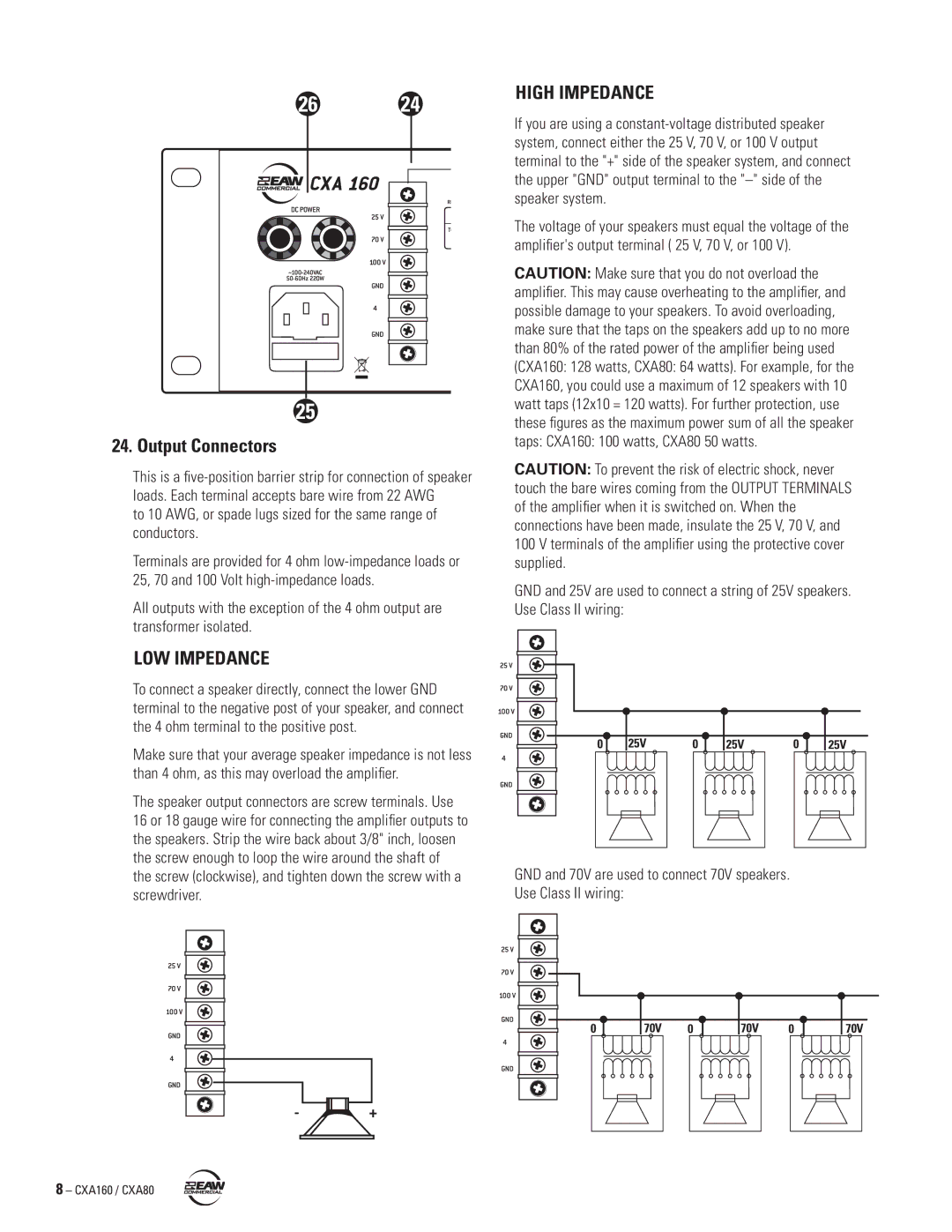
26 24
25
24. Output Connectors
This is a
to 10 AWG, or spade lugs sized for the same range of conductors.
Terminals are provided for 4 ohm
All outputs with the exception of the 4 ohm output are transformer isolated.
LOW IMPEDANCE
To connect a speaker directly, connect the lower GND terminal to the negative post of your speaker, and connect the 4 ohm terminal to the positive post.
Make sure that your average speaker impedance is not less than 4 ohm, as this may overload the amplifier.
The speaker output connectors are screw terminals. Use
16 or 18 gauge wire for connecting the amplifier outputs to the speakers. Strip the wire back about 3/8" inch, loosen the screw enough to loop the wire around the shaft of the screw (clockwise), and tighten down the screw with a screwdriver.
HIGH IMPEDANCE
If you are using a
The voltage of your speakers must equal the voltage of the amplifier's output terminal ( 25 V, 70 V, or 100 V).
CAUTION: Make sure that you do not overload the amplifier. This may cause overheating to the amplifier, and possible damage to your speakers. To avoid overloading, make sure that the taps on the speakers add up to no more than 80% of the rated power of the amplifier being used (CXA160: 128 watts, CXA80: 64 watts). For example, for the CXA160, you could use a maximum of 12 speakers with 10 watt taps (12x10 = 120 watts). For further protection, use these figures as the maximum power sum of all the speaker taps: CXA160: 100 watts, CXA80 50 watts.
CAUTION: To prevent the risk of electric shock, never touch the bare wires coming from the OUTPUT TERMINALS of the amplifier when it is switched on. When the connections have been made, insulate the 25 V, 70 V, and 100 V terminals of the amplifier using the protective cover supplied.
GND and 25V are used to connect a string of 25V speakers. Use Class II wiring:
0 | 25V | 0 | 25V | 0 | 25V |
GND and 70V are used to connect 70V speakers. Use Class II wiring:
-
0
+
70V 0
70V 0
70V
– CXA160 / CXA80
